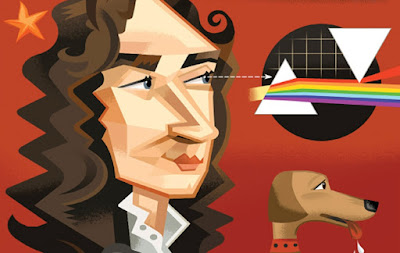 |
| Sir Isaac Newton's impact on Optics. Link below. |
Topics: Geometry, History, Science, Research
Every day, we conduct science experiments, posing an “if” with a “then” and seeing what shakes out. Maybe it’s just taking a slightly different route on our commute home or heating that burrito for a few seconds longer in the microwave. Or it could be trying one more variation of that gene, or wondering what kind of code would best fit a given problem. Ultimately, this striving, questioning spirit is at the root of our ability to discover anything at all. A willingness to experiment has helped us delve deeper into the nature of reality through the pursuit we call science.
A select batch of these science experiments has stood the test of time in showcasing our species at its inquiring, intelligent best. Whether elegant or crude, and often with a touch of serendipity, these singular efforts have delivered insights that changed our view of ourselves or the universe.
Here are nine such successful endeavors — plus a glorious failure — that could be hailed as the top science experiments of all time.
Eratosthenes Measures the World
Experimental result: The first recorded measurement of Earth’s circumference
When: end of the third century B.C.
Just how big is our world? Of the many answers from ancient cultures, a stunningly accurate value calculated by Eratosthenes has echoed down the ages. Born around 276 B.C. in Cyrene, a Greek settlement on the coast of modern-day Libya, Eratosthenes became a voracious scholar — a trait that brought him both critics and admirers. The haters nicknamed him Beta, after the second letter of the Greek alphabet. University of Puget Sound physics professor James Evans explains the Classical-style burn: “Eratosthenes moved so often from one field to another that his contemporaries thought of him as only second-best in each of them.” Those who instead celebrated the multi-talented Eratosthenes dubbed him Pentathlos, after the five-event athletic competition.
That mental dexterity landed the scholar a gig as chief librarian at the famous library in Alexandria, Egypt. It was there that he conducted his famous experiment. He had heard of a well in Syene, a Nile River city to the south (modern-day Aswan), where the noon sun shone straight down, casting no shadows, on the date of the Northern Hemisphere’s summer solstice. Intrigued, Eratosthenes measured the shadow cast by a vertical stick in Alexandria on this same day and time. He determined the angle of the sun’s light there to be 7.2 degrees, or 1/50th of a circle’s 360 degrees.
Knowing — as many educated Greeks did — Earth was spherical, Eratosthenes fathomed that if he knew the distance between the two cities, he could multiply that figure by 50 and gauge Earth’s curvature, and hence its total circumference. Supplied with that information, Eratosthenes deduced Earth’s circumference as 250,000 stades, a Hellenistic unit of length equaling roughly 600 feet. The span equates to about 28,500 miles, well within the ballpark of the correct figure of 24,900 miles.
Eratosthenes’ motive for getting Earth’s size right was his keenness for geography, a field whose name he coined. Fittingly, modernity has bestowed upon him one more nickname: father of geography. Not bad for a guy once dismissed as second-rate.
The Top 10 Science Experiments of All Time, Adam Hadhazy, Discover Magazine
Comments